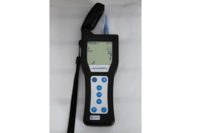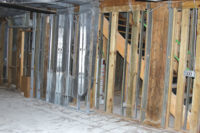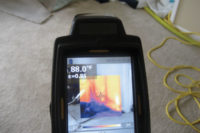Drying Trends

The restoration industry is growing due in large part to rapid advances in scientific knowledge and technological advances. As an industry, we are fortunate to be a part of what can only be defined as a recession-resistant market. The reason for this is obvious: disasters happen.
Our population is growing, sprinkler systems are aging, we are building more-impervious surfaces, creating more flooding events…the list goes on. How big the restoration industry is depends on whom you ask.
You can choose to evolve with the growing market by undergoing minor changes over time, or you can be part of a revolutionary trend – using the latest drying technology – characterized by more dramatic change in less time. This trend encourages fresh thinking and innovation in the tools we use to dry wet structures: dehumidifiers, air movers, and heat.
Selecting the appropriate drying equipment is very important because it expresses your understanding of restoration techniques, building science, and adds value to your company.
The basic tenet when drying structures is harnessing energy. Any drying scenario, whether in a single-family dwelling, an apartment complex or other structure, can only dry as fast as the proper amount of energy can be directed to the moisture remaining in wet materials following extraction. This is especially true if there are dense materials with low permeance or porosity.
Drying involves removing moisture from wet materials, and it not only involves looking at atmosphere readings, but also a reliance on structural material readings and changes to the system based on drying data.

The goal is to optimize the delivery of energy. In researching heat energy and its importance in the role of drying it’s obvious that, together, temperature and air movement determine the rate of evaporation. How energy is used, however, reflects a restorer’s knowledge.
Some professionals take accurate moisture readings, but fail to use the data to dry optimally. In fact, mistakes are made all the time. Ideally, improved understanding of drying technology will be used to deliver superior performance when drying wet structures.
What should come to mind when you think of drying is, What are the available options? As a mechanic uses different tools for each maintenance procedure, a restorer should be able to evaluate the situation and determine what application is best suited to promptly and effectively dry structures and contents.
There is an energy “sweet spot” that provides better drying and, often times, reduces secondary damage and unnecessary demolition. New technology is providing superior performance for restorers who have adapted and decided to change ahead of their competitors. These are today’s pioneers.
There are many tools that should come to mind when you think of drying – air movers; refrigerant (how many still use the old conventional type rather than low grain?) and desiccant dehumidifiers; directed heat systems; heat; negative pressure mats, etc. Each should be considered based on unique circumstances of the job. Combining equipment may optimize drying, while directing heat can make an amazing difference.
In order to use heat properly, it is important to consider some factors. The IICRC S500 Standard and Reference Guide for Professional Water Damage Restoration discusses the effect heat has on drying. It states in part that “Proper temperature control in the drying environment is important to enhance both the evaporation rate and effectiveness of dehumidification.” It goes on to state that “Drying walls, solid wood flooring or the underside of subfloors, such as plywood, can be accelerated using heat.”

Better yet, today’s new units are quieter and more energy efficient, which makes drying a wet house where people are living more tolerable for the occupants and speeds up the whole process.
As every scientist who has stepped into the treacherous waters of research before me, I am keenly aware of the disconnect between evidence and industry awareness. Restoration contractors may not be aware that the basis for efficient drying has historically been linked to what “feels right” or what “seems to work.” Even then, information comes only from those individuals with confidence enough to tell others. Many drying techniques have been discovered serendipitously, with little effort to find out how or why a technique works.
Today, more than 16 years after IICRC produced its first water-damage standard, presumed drying effectiveness based on consensus of knowledgeable individuals remains the chief support for the theory of drying. Without rigorous research, our industry will continue to undergo small incremental changes without knowing whether or not there is a measurable benefit.
Our industry needs more comprehensive research to make the best use of drying technology. To a large extent, it can be said, that growth is related to the dynamics of change and innovation, which can only be fueled by knowledge. I will be sharing my research here in future articles and hope that, as an industry, we can learn together how best to incorporate the new tools and knowledge into our businesses.
Looking for a reprint of this article?
From high-res PDFs to custom plaques, order your copy today!





